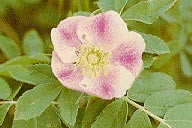 Loading... Please wait...
Loading... Please wait...- Home
- SEEDS
- SEED MIXES
- BUY PLANTS
- Info Request
-
Educational Videos
- Greenhouse Transplanting Demonstration
- Native Seed Cleaning demonstration at Ion Exchange Native Seed and Plant Nursery
- Attracting Butterflies
- Bidens - Bidens cernua Harvest Video
- Big Blue Stem Harvest
- Butterfly Milkweed Video
- Button Blazingstar - Liatris aspera Video
- Buttonbush - Cephalanthus occidentalis Video
- Canada Anemone - Anemone canadensis Harvest Video
- Cardinal Flower - Lobelia cardinalis Video
- Control Burn - Wildflower Field
- Cream Gentian - Gentiana flavida
- Culver's Root - Veronicastrum virginicum Video
- Cup Plant - Silphium perfoliatum Video
- Dormant Seeding | Planting
- Earthyman's Favorite Wildflowers Video
- Eco-Friendly Golf Course Seed Mix
- Floating Islands
- Fringed Loosestrife - Lysimachia ciliata Video
- Giant Yellow Hyssop - Agastache nepetoides Video
- Indiangrass - Sorghastrum nutans Video
- Iowa Prairie Partner Program
- Leadplant - Amorpha canescens (Potted) Video
- Meadow Blazingstar - Liatris ligulistylis
- Midland Shooting Stars - Dodecatheon meadii Video
- Native Plant Nursery Field Irrigation Experiment
- Nodding Onion - Allium cernuum Video
- Ohio spiderwort - Tradescantia ohiensis Video
- Old Man's Beard - Clematis virginiana blooms Video
- Oxeye Sunflower - Heliopsis helianthoides Video
- Prairie Spiderwort - Tradescantia bracteata
- Purple Coneflower - Echinacea purpurea Video
- Rain Garden or Water Garden Video
- Rattlesnake Master - Eryngium yuccifolium Video
- Riverbank Stabilization - Wetland Plants
- Rose Mallow - Hibiscus militaris Video
- Rosinweed - Silphium integrifolium Video
- Royal Catchfly - Silene regia
- Showy Tick Trefoil - Desmodium canadense Video
- Sneezeweed - Helenium autumnale Video
- Swamp Betony - Pedicularis lanceolata Video
- Swamp Milkweed - Asclepias incarnata Video
- Sweet Blackeyed Susan - Rudbeckia subtomentosa Video
- Tall Coreopsis - Coreopsis tripteris Video
- Urban Butterfly Garden
- Wild Bergamot - Monarda fistulosa Video
- Wild Geranium - Geranium maculatum Harvest
- Wild Goldenglow - Rudbeckia lanciniata Video
- Wild Petunia - Ruellia humilis Harvest Video
- Woodland Knotweed - Polygonum virginianum Video
- Yellow Coneflower - Ratibida pinnata Video
- Blog
- Resources
- Policies
Contact Us
Phone:
563-419-0837
or 563-535-7231
Email:
hbright@ionXchange.com
Browse Products
Add to Wish List
You Recently Viewed...
Our Newsletter
Product Description
Rosa is the ancient Latin name for "rose". Arkansana means "of Arkansas".
| Sun Exposure | Prairie, Savanna |
| Soil Moisture | Wet Mesic, Mesic, Dry Mesic, Dry |
| Bloom Time |
Summer, Fall June, July, August |
| Bloom Color | Pink |
| Max Height | 18 - 24 inches |
| Wetland Code | UPL |
| Germ Code | C(60), F, H |
| Seeds Per Ounce | 2,500 |
The Wild Prairie Rose is common to the western areas of the Tallgrass prairie region. There are 9 to 11 leaflets per leaf and the flower stalks and fruits are smooth and hairless. It will grow to height of 2 feet. Flowers in varying shades of pink bloom from June through September. There are five green sepals with the wild roses that form a vase-shaped base for the bud and flower. These mature into the fruit (rose hips) and look somewhat like an apple, retaining their color well into winter.
The Meskwaki and Menomini Indians boiled rose hips to make a syrup for a multitude of food uses. The skins of the boiled hips were used to treat stomach troubles. The Chippewa used the second layer of skin beneath the outer skin of the rose hips by scraping it into a cloth, soaking it in water and then squeezing that liquid into the eyes like eyedrops for sore or inflamed eyes. (This was the first step in a procedure that next involved the same process using red raspberry root.) Both Native Americans and early settlers boiled rose hips for food. They also ate the leaves, flowers and young shoots when other food was scarce.
It is said that 3 single rose hips contain the same amount of vitamin C as a large orange.
Edible Uses: Fruit - raw or cooked. Also used for making syrups, jams and tea. Rich in vitamin C. The fruit is about 15mm in diameter, but there is only a thin layer of flesh surrounding the many seeds. Some care has to be taken when eating this fruit, see the notes above on known hazards.
Medicinal Uses: The root is haemostatic, stimulant and tonic. A compound decoction of the root has been used in the treatment of bleeding wounds, fits and convulsions. the root has been used in the treatment of eye complaints. The fruit of many members of this genus is a very rich source of vitamins and minerals, especially in vitamins A, C and E, flavanoids and other bio-active compounds. It is also a fairly good source of essential fatty acids, which is fairly unusual for a fruit. It is being investigated as a food that is capable of reducing the incidence of cancer and also as a means of halting or reversing the growth of cancers.
Other Uses: The petals have been used as a perfume for hair oil.
Herbal Uses: Unknown











